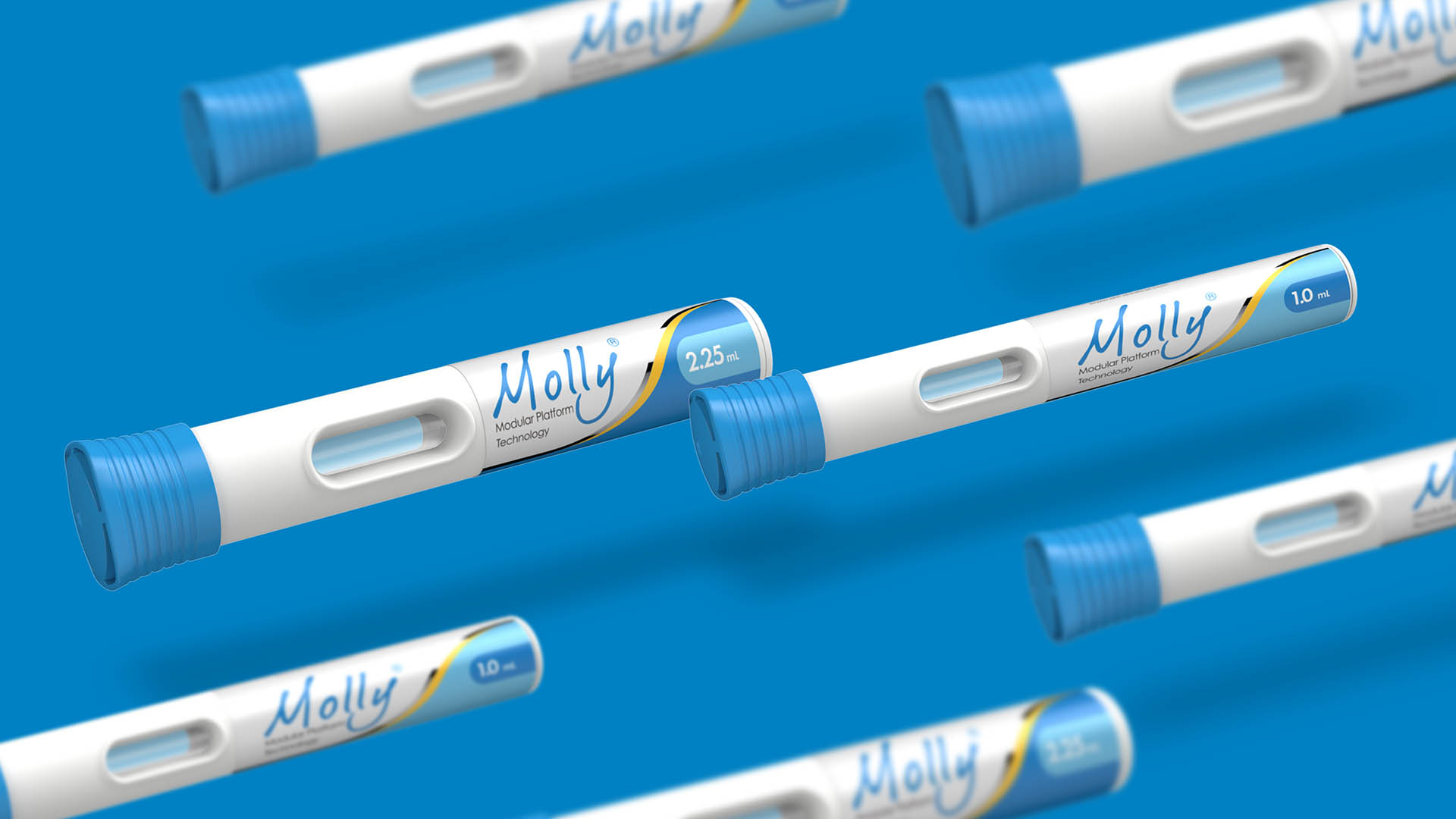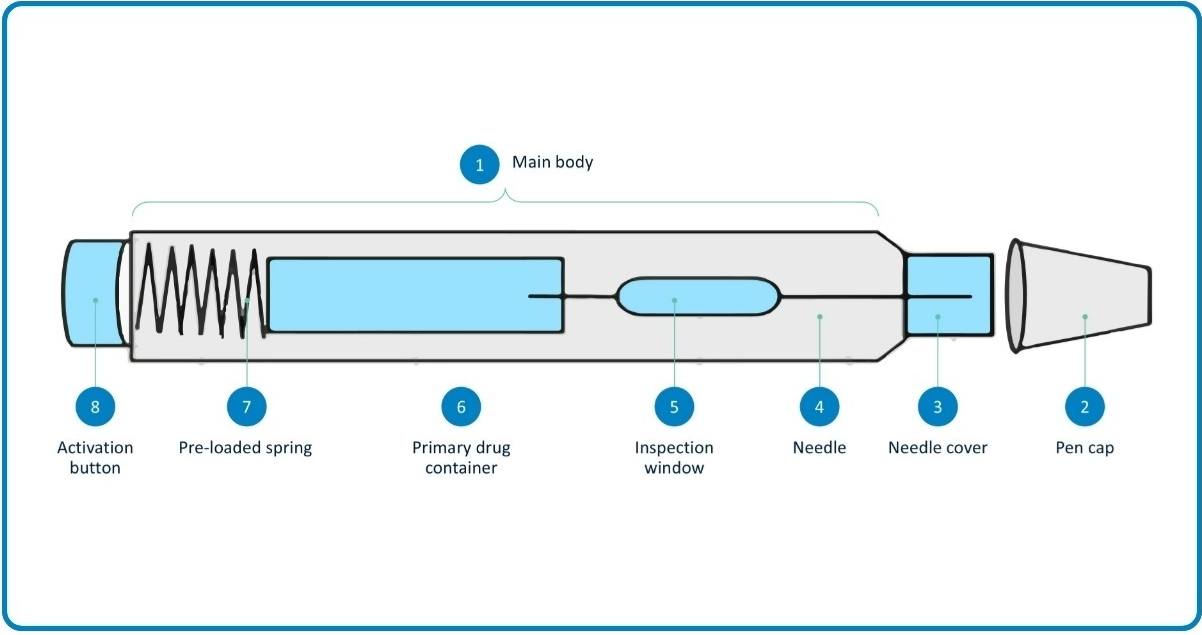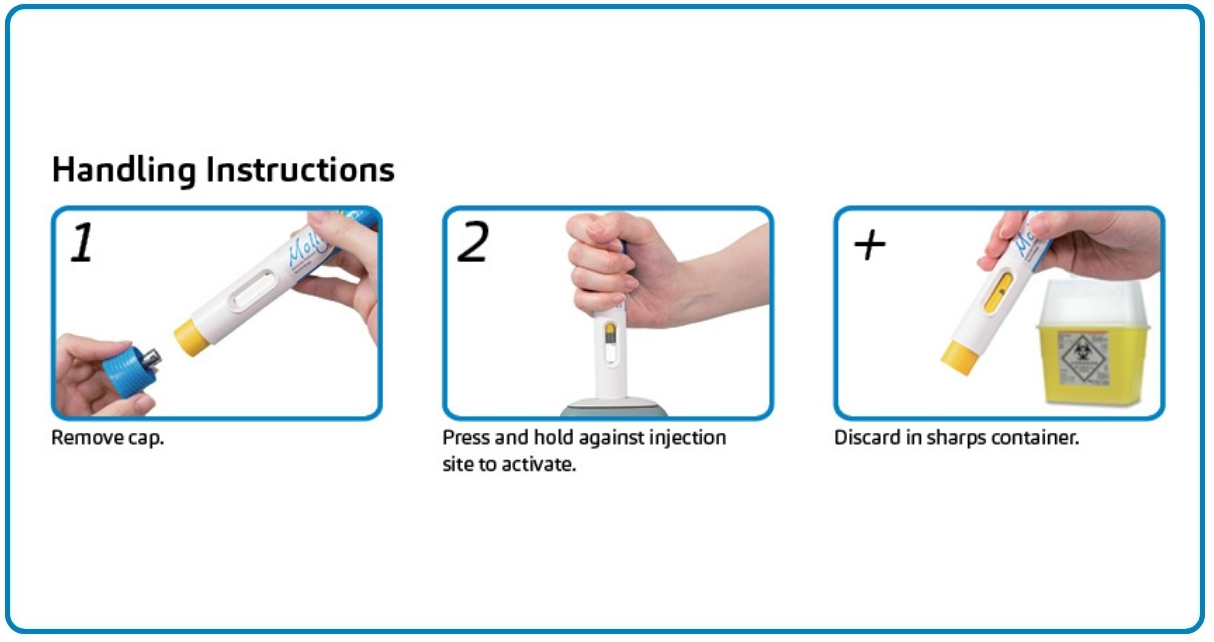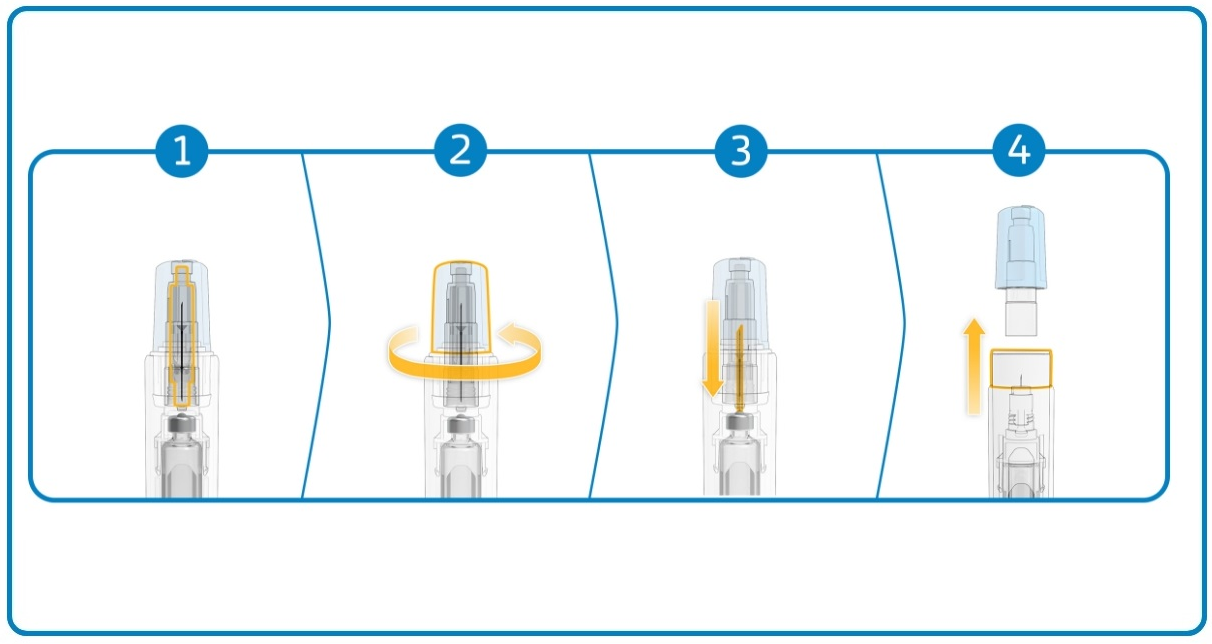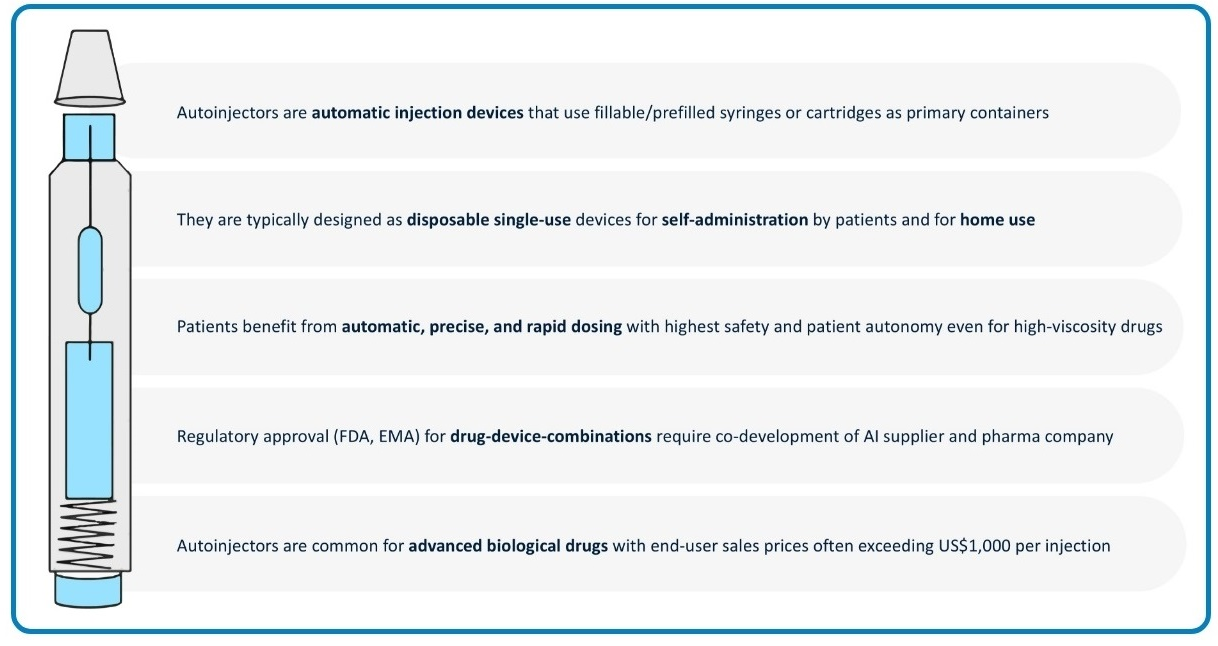Exploring the basics of autoinjectors
December 11 2024
With over 30 years of industry experience, SHL Medical has helped shape how autoinjectors transform the way medications are delivered, particularly in the realm of biologic therapies.
As the global autoinjector market continues to expand—projected to reach $US19.67 billion by 20281—it is crucial for pharmaceutical companies entering the biologics space to understand the basics of autoinjectors. This knowledge is essential for developing solutions that enhance patient experiences and therapeutic outcomes.
In this article, we will take a closer look at what autoinjectors are, how they work, and why they are increasingly favored for modern therapies.
What is an autoinjector?
An autoinjector is a device designed to facilitate self-administration of injectable medications. By delivering precise doses with minimal effort, autoinjectors address challenges associated with manual injections, such as variability in injection technique and needle anxiety.1
They are particularly beneficial for biologics—complex, large-molecule therapies requiring consistent administration and precise dosing. Commonly used to treat chronic conditions like rheumatoid arthritis, multiple sclerosis, diabetes, and obesity, biologics demand high precision, which autoinjectors are uniquely equipped to deliver.2
Autoinjectors are no longer limited to single-use formats. Recent advancements, such as reusable devices like SHL Medical’s Elexy™, and digital connectivity like SHL Medical’s Molly® Connected Cap, have expanded their application to increase patient convenience.
Understanding the route of administration
To better understand autoinjectors, it is important to first explore the concept of the “route of administration”, which refers to how drugs are delivered into the body. The choice of the administration route influences therapeutic efficacy and patient compliance.
There are various ways medications can be administered, such as orally, intravenously (IV), intramuscularly (IM), or subcutaneously (SC). The choice of route depends on factors such as the drug’s properties, the desired speed of absorption, and the intended effect.
Autoinjectors primarily deliver medications through the SC or IM routes, offering patients benefits like simplicity, reduced hesitation, and minimized pain at the injection site.3
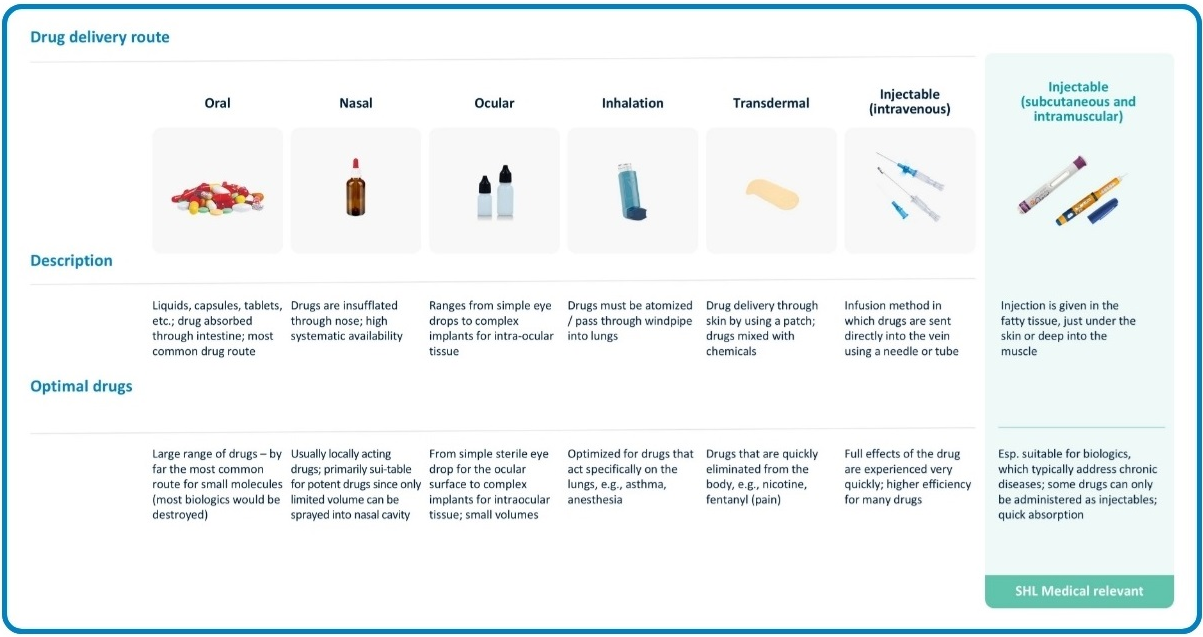
Figure 1: An overview of different types of drug delivery routes
SC injections involve administering medication into the fatty tissue beneath the skin, allowing for slower absorption and compatibility with high-viscosity formulations. IM injections, on the other hand, deliver medication directly into muscle tissue for faster absorption.
Autoinjectors are particularly well-suited for SC injections due to their less invasive nature, precise depth control, and consistent delivery rates, all of which are critical for therapeutic success.4
Breaking down the components of an autoinjector
Every autoinjector is designed with numerous components that work together to ensure safe and reliable drug delivery. Typically, an autoinjector consists of 10 or more key components.
Figure 2: Components of an autoinjector
The key components as illustrated in Figure 2 include:
1. Main body: Houses the primary drug container, the pre-loaded spring, and often features an inspection window for visual confirmation.
2. Pen cap: Protects the device from contamination and prevents accidental activation during storage.
3. Needle cover: Shields the needle, reducing the risk of needlestick injuries prior to use.
4. Needle: Concealed until activation to enhance safety and reduce patient anxiety.
5. Inspection window: Allows patients to monitor the injection, providing visual feedback on drug delivery.
6. Primary drug container: A pre-filled syringe or a cartridge containing the medication.
7. Pre-loaded spring: Drives the plunger of the syringe to deliver the medication upon device activation.
8. Activation button: Some autoinjectors, like SHL Medical’s Molly, are activated by simply pressing the device against the skin, while others use a manual button to start the injection process.
Each component is integral to an autoinjector’s overall functionality, usability, and safety. At SHL Medical, we strive to balance user-friendliness with mechanical reliability, while maintaining stringent safety standards to meet diverse patient needs. Backed by comprehensive in-house manufacturing capabilities, we collaborate with pharmaceutical partners to develop innovative solutions tailored to both patient and market demands.
Mechanism of autoinjectors
The process of operating an autoinjector is straightforward. Users remove the cap, exposing the sterile needle cover. Once the device is positioned against the designated injection site, users can activate the autoinjector. Depending on the design, activation may begin when the patient either presses the device against their skin or presses a button. Once activated, the needle penetrates the skin and the pre-loaded spring drives the plunger, delivering the medication.
During the delivery, patients can monitor the injection progress via various feedback mechanisms, such as visual indicators, audible clicks, or tactile cues. Upon completion, the needle may either automatically retract into the autoinjector or be enclosed by a cover that deploys post-administration, effectively reducing the risk of accidental needlestick injuries. The first option results in a less-complex device with a lower number of components, helping to simplify the manufacturing process.5
Figure 3: A step-by-step injection demonstration of SHL Medical’s Molly 2.25 mL autoinjector
Benefits of autoinjectors
For pharmaceutical companies introducing new biologic therapies, ensuring patient satisfaction and ease of use are important to the successful adoption of their treatments, and autoinjectors serve as an effective solution to address these needs.
Research shows that autoinjectors lead to higher patient satisfaction and fewer errors compared to manual injection methods.6 By enabling patients to take control of their treatment at home, autoinjectors reduce the need for frequent hospital visits.7 Since the device comes with pre-measured medication—delivered in a pre-filled syringe or in a cartridge—there is no need to withdraw medication from a separate vial, simplifying the process and eliminating the reliance on professional assistance.
Safety is another key advantage, as most autoinjectors come with hidden-needle designs and automatic retraction features to minimize the risk of accidental injuries. Today, even cartridge-based autoinjectors is equipped with unique safety features that eliminate the need for end users to manually attach the needle (Figure 4). Furthermore, feedback systems provide patients with an added sense of reassurance. Together, these features contribute to improved compliance, as patients experience less pain, fewer complications, and reduced anxiety, making them more likely to adhere to their prescribed treatment plans.
Figure 4: An overview of SHL Medical’s Needle Isolation Technology mechanism—a safety solution for cartridge-based autoinjectors. 1. The closed system. 2. Twist off the needle cap. 3. The non-patient end of the cannula moves backward to pierce the cartridge septum and open the fluid path. 4. Needle cap removal where the needle permanently stays hidden during the injection process
Building on the basics
For new pharmaceutical companies venturing into biologic drug development, gaining a solid understanding of autoinjectors is an important first step. This article marks the beginning of our Back to Basics series, where we explore a range of topics around injectable drug delivery.
Figure 5: A practical introduction to the fundamentals of autoinjectors
Meanwhile, our team is here to guide you through this journey with expertise built on decades of experience. Explore our innovative, patient-centric autoinjector solutions and discover how we are leading the way in the injectable drug delivery industry.
References:
1. PCI Pharma Services. Autoinjectors: A revolutionary leap in drug delivery. PCI Pharma Services. https://pci.com/resources/autoinjectors-a-revolutionary-leap-in-drug-delivery/
2. Keller, M., & Brown, T. (2023). The evolution of autoinjector technology for biologic therapies: Current trends and future directions. Advances in Therapy, 40(4), 715–728. https://link.springer.com/article/10.1007/s12325-023-02671-2
3. Smith, J., & Johnson, L. (2022). The reliability of auto-injectors in clinical use: A systematic review. Cureus Journal of Medical Science, 14(5), e12345. https://www.cureus.com/articles/146930-the-reliability-of-auto-injectors-in-clinical-use-a-systematic-review
4. Laurusonis, L., Cleathero, I., & Jensen, H. J. (2020). Design and development considerations for autoinjector delivery systems: Technology developer and industry perspectives. In S. Ranade & R. Cannon (Eds.), Development of biopharmaceutical drug-device products (pp. 595–623). Springer. https://doi.org/10.1007/978-3-030-31415-6_33
5. Earl, M. (2022). A checklist for autoinjector design. ONdrugDelivery. https://www.ondrugdelivery.com/a-checklist-for-autoinjector-design/
6. Ziemssen, T., Sylvester, L., Rametta, M., & Ross, A. P. (2015). Patient satisfaction with the new interferon beta-1b autoinjector (BETACONNECT™). Neurology and Therapy, 4(2), 125–136. https://doi.org/10.1007/s40120-015-0036-y
7. Ponzetti, C., Canciani, M., Farina, M., Era, S., & Walzer, S. (2016). Potential resource and cost saving analysis of subcutaneous versus intravenous administration for rituximab in non-Hodgkin's lymphoma and for trastuzumab in breast cancer in 17 Italian hospitals based on a systematic survey. ClinicoEconomics and Outcomes Research, 8, 227–233. https://doi.org/10.2147/CEOR.S97319
